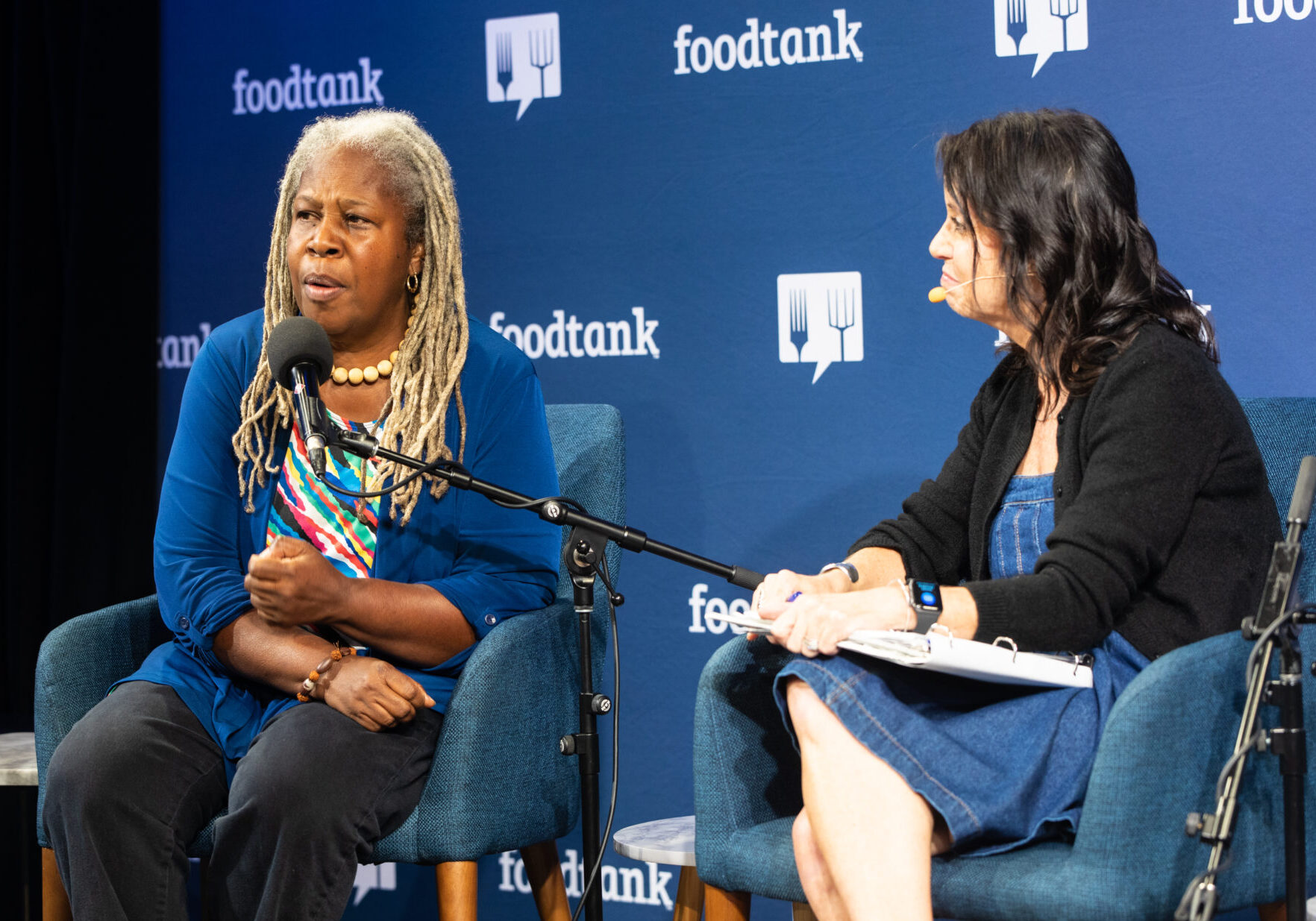Food and agriculture have enormous potential as climate solutions, but there can be no resilient future without community-level food security and healthy consumption, panelists said during a standing-room-only Climate Week NYC event.
“I believe the climate movement is a celebration of life, and food is the greatest vehicle for that,” says Julia DeSantis, Head of Sustainability at Farmlink.
Many people still struggle to reliably access nourishing food, panelists said—so harnessing the true power of food as a climate solution will take community-centric approaches like supporting local food production, system-wide initiatives like food waste reduction, and cross-sector action on programs like food is medicine.
The Summit, “The Role of Technology at The Nexus of Affordability, Nutrition, and Food Waste,” was presented by Food Tank along with partners Flashfood, Divert, ReFED, and Apeel. A recording of the entire Summit and clips of individual panels can be viewed on Food Tank’s YouTube channel.
Any future food system must be one that centers farmers and supports communities in producing their own food, panelists said.
“One of the most unfortunate things in this country is that people are doing work that’s not meaningful to them,” says Alice Waters, a chef, activist, and best-selling author. “And there’s nothing more meaningful than planting a seed and watching it grow.”
And those who do the work of growing seeds—of feeding their communities—need to be given the resources to succeed. This means fair pay, respectable working conditions, and being treated with dignity as the knowledge producers and culture bearers they are.
“We work hard as farmers, and there’s a cost and a value to the work that we do,” says Karen Washington, Farmer and Owner of Rise and Root Farm.
“Start by asking communities what they want, not what they need,” she says. “Asking what we need comes from a position of deficit. Asking what we want (puts us in) a position of power.”
Another powerful way to value farmers’ work is to fight against food waste, panelists said. Perfectly good food that ends up in a landfill instead of on a plate is a failure at so many levels of the food system.
“Why would we so intensively extract from the earth only to throw it away?” says Jenny Du, Co-Founder and SVP of Operations at Apeel.
This is why we need what Ryan Begin, Co-Founder and CEO of Divert, calls a “mosaic of solutions.” And like a mosaic, large-scale results are made up of smaller parts.
“Oftentimes we look for these massive macro changes, instead of going one family at a time,” says Nick Bertram, CEO and President of Flashfood. A cultural expectation of abundance drives stores to over-stock and consumers to over-purchase, but engaging with individuals on food waste is a way to drive a culture shift across age and income levels, he said.
“If we don’t address these issues in our own homes, how can we solve them globally?” asks Sweta Chakraborty, CEO of We Don’t Have Time North America.
When we are able to zoom out to that much wider scale, panelists said, harnessing the power of food as a path toward nourishing both people and the planet also means we have to think outside traditional silos.
“Health is a human right, but we don’t always protect it in the legal system, and it requires a lot of collaboration and cross-sector work to translate it into law,” says Kat Morgan, a Program Associate with The Rockefeller Foundation who has worked on the Periodic Table of Food Initiative.
Programs like food is medicine can be effective by linking food systems with healthcare and other social institutions, panelists said. Due to noncommunicable diseases like obesity, diabetes, cardiovascular issues, and others, an overwhelming majority of Americans are not living at optimal metabolic health, says Dariush Mozaffarian, a cardiologist and the Director of the Food is Medicine Institute at Tufts University.
“When you have 93% of the population who’s sick, the system is broken. This is not a problem of individual free will. Broken systems need systems change,” he says.
Strong scientific evidence links healthful food consumption with broader metabolic well-being, Mozaffarian says, and leveraging the healthcare system to bolster food access is likely both more effective and less expensive than pharmaceuticals.
But policy challenges remain. Few voters make decisions at the ballot box based on food policy alone, says Sam Kass, a Chef and formerly President Barack Obama’s Senior Policy Advisor for Nutrition Policy. Even if policy change is not a silver-bullet solution, elected lawmakers at all levels of government do have influence over how Americans eat.
“We have an election between now and the (release of the) 2025 Dietary Guidelines for Americans, so that’ll determine how those come out,” says Marion Nestle, Professor Emerita of Nutrition, Food Studies, and Public Health at New York University. “Unless we can get people to run for office who care about public health or environmental health, we’re not going to get any change.”
Watch more:
Articles like the one you just read are made possible through the generosity of Food Tank members. Can we please count on you to be part of our growing movement? Become a member today by clicking here.
Photo by Ryan Rose Photography for Food Tank.















